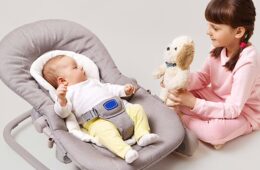information about breast pumping
Many breastfeeding mothers who are nearing the end of maternity leave want to continue giving their babies breast milk when they return to work, but the concept of pumping and feeding the baby from a bottle may be foreign to them. After all, nursing doesn't require any paraphernalia.
If you're about to embark upon this transition, you're probably wondering what equipment you'll need. The most important item, naturally, is the breastpump.
"Mothers returning to work after their milk supplies are established will need a pump that withdraws milk as effectively as possible but is also portable and convenient," says New Jersey-based lactation consultant Diana West, IBCLC, coauthor of The Womanly Art of breastfeeding, 8th Edition.
Read on to determine what features to seek in a pump, how often to use it, and what else to buy.
Finding the Right pump
Electric or manual? Single or double pump? These are some of the choices that you'll encounter when shopping.
If you're heading back to a full-time job, a high-quality, double electric pump ($150 and up) will help you express your milk most efficiently.
"Double-pumping can save time," West says. "And in most cases, electric models work more reliably and effectively than battery-powered models."
breast pumps are manufactured to mimic the nursing habits of babies and shouldn't hurt when properly attached. You can adjust an electric pump's speed and suction levels to suit your needs. If you only plan to pump occasionally (for example, if you work half days or you have a home office), you may only need an inexpensive manual breast pump ($20).
You shouldn't need a hospital-grade pump, which are large and heavy, but they're available to rent from many hospitals. They're commonly used by mothers of babies who spend time in the hospital NICU (neonatal intensive care unit) who aren't able to nurse right away and want to establish their milk supplies.
"Mothers returning to work who have full-term babies and established milk supplies do not usually need them," West says.
Whatever model you choose, use it several times during your maternity leave, so you don't have to figure out how to work a breast pump on your first day back at the office.
New versus Old breast pumps
Are the breast pumps on the market today superior to the ones your friends used a few years ago? Probably not.
"Actual pump technology has not changed significantly in the past decade," West says. “Milk generally cannot be removed more quickly or easily from today's pumps than pumps of many years ago. The most significant improvement is decrease in pump sizes and weights that make them more portable and convenient to take to work."
Although a new pump may not be better than an older model, don't take a hand-me-down breast pump from a friend or relative. Unlike professional-grade rental pumps, which are designed to be used by many women, the design of individual-purchase pumps allows imperceptibly tiny milk particles to contaminate parts of the machinery that can't be cleaned or sterilized. They're not intended to be shared between mothers.
Establishing on-the-job Breaks
Federal law now requires most employees to provide a private place other than a bathroom for women to express breast milk for one year after the baby's birth. And 24 states have laws in effect about breastfeeding in the workplace. The protections don't require employers to compensate women for break time spent pumping, but they do have to allow women time to pump when necessary.
"It's much easier for working mothers to take the time they need to pump and ensure that they can continue to breastfeed and provide milk to their babies," West says.
If you know that you're going to continue giving your baby breast milk after you return to work, discuss this with your supervisor or a human resources representative a few weeks before your maternity leave ends. This will give them enough time to accommodate your needs.
"Talk to your employer to work out a schedule," says California-based pediatrician Tanya Remer Altmann, MD, author of Mommy Calls: Dr. Tanya Answers Parents' Top 101 Questions About Babies and Toddlers. "Ask for a private, clean room with a sink and a door that locks."
Getting Down to Business
At work, where you may be touching dirty computer keyboards, elevator buttons, and public bathroom door handles, it's essential to wash your hands before pumping.
Once you're ready for a pumping session, you'll need to trigger the let-down reflex to start your milk flowing. Every woman has her own method, but a few tactics are widely used:
"Relaxing is very important, so go to a quiet, comfortable place away from noise and other workers," says Toronto-based pediatrician Jack Newman, MD, coauthor of breastfeeding Made Simple. "Looking at a picture of the baby or having a piece of clothing that smells of the baby can help. Compression of the breast can also get the milk flow going."
Other tricks that may work: applying a warm compress to the breast, listening to a recording of your baby crying, or shaking the breast before pumping.
How often you should pump depends on your supply and demand, as determined by your baby.
"Initially, a mom should pump during feeding times - such as every three hours - but as a baby gets older, a nursing mom can try to stretch the time between her pumping sessions," says Altmann, who notes the importance of listening to your body when it's time for another pumping session. "Waiting too long can sometimes cause discomfort, engorgement, and a decrease in your milk supply, as your body will make what it thinks your baby needs."
Doubling Up
You'll pump twice as much milk at a time with a double pump, but some people find it too difficult to attach both breasts to a pump simultaneously without accessories. Even if you can hold two breast flanges in place, you may need another hand to turn the pump on! And it may be more practical to use your hands to catch up on e-mails or flip through your files while pumping. You can purchase a hands-free breast-pump bra ($40) or get creative and make your own.
"Just cut a hole in the nipple area of an old sports bra to make a low-cost and very effective device to make it easier to pump hands-free," West says.
Storing Your Milk
Use clean screw-top bottles or special milk storage bags that are BPA free (never ordinary ziptop bags) to hold the milk that you pump at work. Label the containers by date so you use the oldest ones first. You may want to store milk in single-serving sizes of 2-4 ounces. Be sure to keep your pumped milk chilled until you're able to bring it home.
"A refrigerator or an insulated Thermos or cooler with ice packs will keep milk consistently cold at work," West says.
If you store your milk in the office refrigerator during the day, have some ice packs on hand to transport your milk home, Newman says.
Fresh versus Frozen
Whether you should freeze or simply chill your pumped milk depends on how soon you'll be serving it to your baby.
Freshly pumped breast milk can last at room temperature for up to 8 hours. In an insulated cooler bag, it's good for 24 hours. In the refrigerator, it can stay for 5 days. (Place it in the back of the fridge to keep it coolest.) In the regular refrigerator freezer, breast milk will last up to 2 weeks, or in a self-contained freezer, for 3 to 6 months. And if you have a deep freezer with a constant 0 degrees Fahrenheit temperature, the milk will last for 6 to 12 months.
Whenever possible, give your baby fresh breast milk.
"Fresh milk is far superior to frozen," Newman says. "Freezing milk kills all the living cells, and some other immune factors are diminished by freezing."
The best ways to thaw frozen milk are moving the container to the refrigerator overnight or placing the container in a bowl of warm water for immediate use. Never microwave breast milk; not only will it degrade the nutritional quality of the milk, it's dangerous for your baby: Microwaves don't heat things evenly, so they can create hot spots in the milk that could burn your baby's mouth.
Let’s Glow
Glow is here for you on your path to pregnancy
Glow helps you navigate your fertility journey with smart tools, personalized insights, and guidance from medical experts who understand what matters most.
25+ million
Users
4.8 stars
200k+ app ratings
20+
Medical advisors



